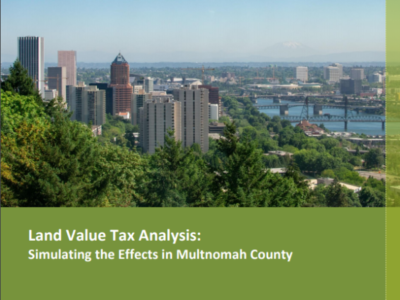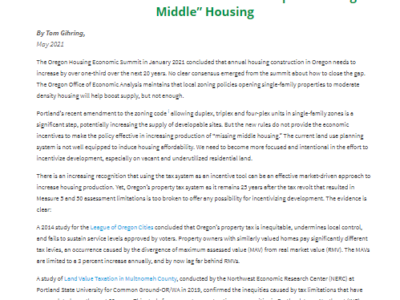Connecticut Passes Commons-Based Approach to Taxing Urban Land
Turns traditional property taxes upside down by valuing community contributions to land values. The effect of Land Value Taxation (LVT) will be to recognize the role of community commons such sewers and other public services in adding value to urban real estate.
On June 20, 2013, Connecticut Governor Dannel Malloy signed into law an act permitting – as a pilot program – a tax reform that turns traditional taxation on its head, as it also embraces the idea of the commons as a resource for the community to provide for the everyday public life of urbanized areas. That program is land value taxation (LVT). Initially, three communities will have the opportunity to apply for permission to use the program, with more to follow if LVT is proved successful.
What is LVT
LVT is an alternative version of the real property tax used by a number of cities, school districts and counties in Pennsylvania, as well as most municipalities and states in Australia and New Zealand. (For more information on this approach to valuing urban land see Land is a Commonwealth.)
Typically, property tax rates (called mills) fall equally upon land values and building values. LVT shifts the bulk of property tax revenue from buildings (products of private capital and private labor) to the assessed value of land (a public good created by public and community investment).
LVT works to leverage the tax system to work as a tool to help utilize that part of the Commons – schools, public works, parks, police and fire services, etc – that is expensive to build and is often pocketed by private hands in form of speculation and absentee ownership.
For example, the city of Allentown Pennsylvania has dual tax rates of 50.38 Mills on land values and 10.72 Mills on building values. So, the land tax rate is therefore nearly 5 times greater than the building tax rate. Under a standard tax, Allentown would have a single rate of 17.52 Mills to collect the same revenue.
Why Connecticut and Why Now?
The commons ‘“mission” behind the new Connecticut initiative is to equitably provide a “Community Chest” to help urban areas stand on their own, while not pulling down their more prosperous neighbors. This plan also discourages sprawl into areas of the commons that are not easily “price-able” until they are destroyed.
Can we share the wealth? Yes. We can share community created economic value that lies inherently in the land, a value created by all who live and work in a community. The conundrum of Connecticut is much the same as other places. It’s one of the wealthiest states in the US, with some towns enjoying some of the highest concentration of wealth (think Greenwich and Darien) cheek by jowl with poorer cites like Hartford and Bridgeport.
The past 50 years have not been kind to the older cities of Connecticut. Industry has moved, stores have been replaced by big boxes on the fringe of town, which follow middle class residents who could not afford urban burdens of taxation, and opted for sprawling development. This created a downward spiral in tax base and an upward climb in tax rates, making the modern commons of public services and public land that much harder to pay for. In Bridgeport’s – one of the poorest cities in the US – the tax burden is nearly 5 times higher than wealthy Greenwich.
The effect of LVT will be to recognize the role of community commons such sewers and other public services in adding value to urban real estate. LVT will also incentivize actual use of the land, by removing the tax barriers to owning a home or business. Every dollar of added tax to the vacant or blighted land is a dollar removed from what all communities want: strong healthy neighborhoods where everyone has a chance to prosper. A homeowner in a low-income neighborhood would see her property tax cut as much as 50% annually. Owners of a surface asphalt lot in downtown would see their tax increase by over 100%.
It is no wonder that the Connecticut Homebuilders Association, Connecticut Coalition for Justice in Education and the Stamford Urban Development Corporation supported LVT legislation for urban areas. So did the Connecticut Sierra Club, Farmington River Watershed Association and the Connecticut Farmland Trust. Strange bedfellows? Not so much. All are stakeholders in each of their communities. Some communities need to tap their existing resources to improve the lives of citizens and commerce. Some communities need to preserve the unquantifiable gifts of nature. Each community needs the other. LVT can help achieve this common ground.
Joshua Vincent is executive director of the Center for the Study of Economics. He has worked as a consultant to more than 75 municipalities, countries, NGOs and national governments.




